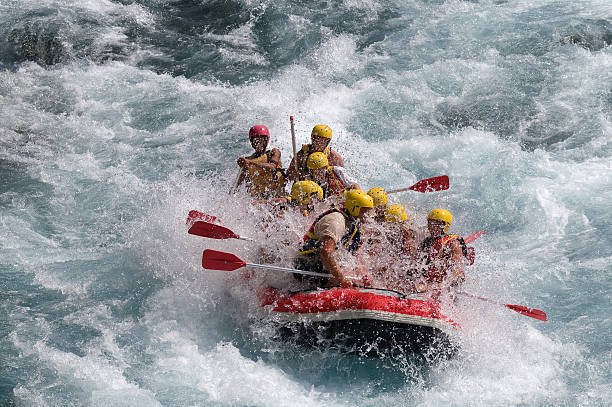The Basics of River Rafting Safety

Before going blackfoot river rafting, you should understand the fundamentals of river safety. As with any water adventure, river rafting requires proper equipment and precautions. Firstly, rafts must be buoyant. They must displace the water they enter by at least the amount of their own weight. By doing so, the rafts offset the pull of gravity. A heavy raft would be unable to displace enough water to remain upright.
Once in the river, the rafts will enter relatively calm waters before entering turbulent waters. The rapids are usually created by large cylinder tubes under the water. Often, these rapids are accompanied by waterfalls. The water rafts must be stable, so it is necessary to wear life vests and wear a life jacket. Regardless of the water temperature, river rafting is a fun way to spend an afternoon.
The best rapids for the average rafter are those rated as Class III or IV. These rapids have large, irregular waves and require precise maneuvering. Although class III and IV rapids are not dangerous for new rafters, they should be reserved for experienced rafters and groups. Similarly, you should never attempt rafting in a Class VI rapid if you are not experienced. Regardless of the level of your skill level, you must always consult a professional before deciding where to go river rafting.
Getting the right gear is essential to ensuring your safety and enjoyment. The rafts used for rafting are very sturdy, and you'll need to have some basic skills to be comfortable on the boat. Make sure you bring your camera as well. Then, you're ready to take your river rafting adventure. If you have never been on a river before, you should go for a scouting mission first. You'll have more fun and experience more with this activity. Click on this link: https://pangaeariverrafting.
Whitewater refers to water that is white in color. Muddy rivers have brown whitewater. The current in whitewater is churning and bubbling. When a raft hits one of these features, it may get stuck against a rock. This can be very embarrassing, so it's important to be prepared for any unexpected challenges. The best way to avoid such a disaster is to read about river rafting safety before heading to the river.
River rafts are composed of many different components, ranging from a plastic cylinder to a fiberglass hull. These parts are designed to withstand the rigors of white water, while bracing the riders and stabilizing their bodies. These boats usually have two or three thwarts, which are air-filled tubes that attach to the outside of the boat and provide a place for swimmers to wedge their feet.
In river rafting, you should also learn about the different types of whitewater. Usually, there are six categories, depending on the technical difficulty. Classes one through six represent easy water, moving flatwater, and novice levels have more dangerous and unpredictable rapids. Class six is best for experienced rafting teams and is usually reserved for expert teams that have taken all necessary precautions. Besides, rapid classification is subjective. Depending on the water level in the river, you may encounter class 3 or class four rapids. If you want to know more about this topic, then click here: https://en.wikipedia.org/wiki/Rafting.
